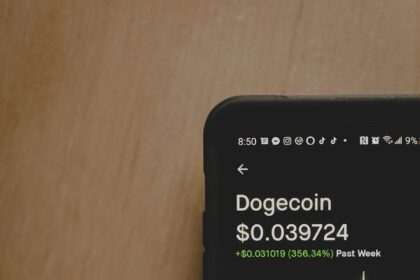Generating extra funds doesn’t require complex skills or significant investments. Low-effort methods such as participating in online surveys, selling unused items, or offering simple freelance services provide friendly entry points for beginners looking to increase their financial resources. These approaches demand minimal setup and can fit easily into daily routines.
Many platforms offer tasks that pay immediately or within a short timeframe, making it easier to track progress and stay motivated. Exploring micro jobs like data entry, content moderation, or tutoring through user-friendly websites creates steady revenue streams without overwhelming newcomers. The key is choosing options that match your current abilities while allowing gradual improvement.
Utilizing apps designed for passive income generation–such as cashback tools or referral programs–also helps supplement earnings with little ongoing effort. Combining multiple low-barrier activities enhances overall returns and builds confidence for tackling more advanced ventures later on. Starting small and consistent leads to sustainable financial growth accessible to anyone ready to take the first step.
Effortless Side Income Paths in Cryptocurrency and Blockchain
For beginners seeking low-effort ways to generate additional funds through blockchain technologies, staking cryptocurrencies offers an accessible entry point. By locking assets in a Proof-of-Stake (PoS) network, users can receive periodic rewards proportional to their stake size. This approach requires minimal technical skills and is supported by user-friendly wallets such as Trust Wallet or Coinbase Wallet, making it suitable for those new to the ecosystem.
Another approachable method involves participating in decentralized finance (DeFi) protocols that facilitate liquidity provision. Users supply tokens to liquidity pools on platforms like Uniswap or PancakeSwap and earn fees generated from trades within these pools. While some understanding of impermanent loss and token volatility is necessary, many platforms provide calculators and guides that reduce the learning curve for newcomers.
Practical Methods to Supplement Income with Blockchain Technology
Microtask platforms integrated with blockchain offer tasks like data labeling or content moderation, compensated in cryptocurrency. Projects such as Livepeer allow participants to contribute computing resources with minimal setup effort, earning tokens over time. These models require low upfront investment but benefit from consistent participation to maximize returns.
Educational incentives represent another emerging mechanism where beginners engage with crypto projects through quizzes or tutorials, earning small token amounts upon completion. Platforms like Coinbase Earn exemplify this concept by combining learning modules with token distribution, fostering a friendly environment for skill acquisition alongside compensation.
- Mining Pools: Joining mining pools reduces individual hardware costs and combines hash power for more consistent payouts–ideal for those unable to invest heavily in mining rigs.
- NFT Marketplaces: Creators and collectors can gain income by trading non-fungible tokens on OpenSea or Rarible; understanding market trends enhances profitability while requiring moderate effort.
- Airdrops: Participating in promotional distributions by holding certain tokens can yield free assets; tracking credible projects is key to avoiding scams.
The selection among these approaches should align with individual preferences regarding risk tolerance, time availability, and willingness to acquire technical knowledge. For example, staking suits those preferring passive involvement with predictable returns, whereas DeFi liquidity providers accept higher complexity for potentially greater gains. Beginners are advised to start conservatively, utilize testnets when possible, and continuously expand their expertise through trusted educational channels.
Cultivating familiarity with wallet security practices–such as safeguarding private keys and enabling two-factor authentication–is critical across all methods discussed. Engaging with community forums like Reddit’s r/CryptoCurrency or specialized Telegram groups can provide ongoing support and clarify doubts encountered during initial steps toward supplementary income generation using blockchain technologies.
Freelance Tasks for Beginners: Practical Paths to Initial Income
Starting with freelance assignments that require minimal technical skills and low initial investment of effort is a strategic approach for those new to online work. Platforms such as Fiverr, Upwork, and TaskRabbit provide numerous roles where novices can perform tasks like data entry, simple graphic design, transcription, or social media moderation. These positions demand basic digital literacy and can be completed within short timeframes, enabling prompt compensation.
Low-complexity gigs often involve repetitive but straightforward duties. For example, transcription jobs require listening to audio files and typing out content accurately–a task suitable for beginners comfortable with language and attentive to detail. Similarly, basic graphic design using templates in tools like Canva enables newcomers to create visuals without advanced software knowledge, generating income through small projects with manageable learning curves.
Technical Insights into Entry-Level Freelance Roles
Task selection should align with the user’s existing skill set to minimize ramp-up time while maximizing output quality. Microtasks such as CAPTCHA solving or image tagging utilize crowdsourcing platforms like Amazon Mechanical Turk or Clickworker. These tasks pay modestly but are highly accessible; they function as introductory experiences in distributed computing environments where human input enhances machine learning models.
A practical case study involves cryptocurrency communities offering bounty programs requiring simple outreach efforts–sharing posts or writing brief reviews on forums. These activities reward participants with tokens or fiat currency depending on platform policies, illustrating how blockchain-based projects integrate beginner-friendly tasks into their marketing strategies without demanding complex technical understanding.
- Content creation: Writing short articles or product descriptions targeting SEO parameters;
- Virtual assistance: Scheduling appointments or managing emails using basic organizational software;
- User testing: Providing feedback on websites or apps from a usability perspective;
- Online surveys: Participating in market research platforms compensating for opinion sharing;
- Simple coding tasks: Fixing minor bugs in open-source repositories using tutorials available on GitHub.
The key aspect of these roles lies in their scalability for beginners: starting with low-effort assignments allows gradual skill acquisition while generating initial revenue streams. Over time, freelancers can leverage gained experience toward more specialized domains with higher remuneration potential.
Cultivating a friendly professional profile by consistently delivering quality outcomes fosters positive client relationships crucial for long-term freelancing success. Employing project management tools like Trello or Notion helps maintain organization even at a beginner level, ensuring deadlines are met without excessive strain. This structured methodology reduces burnout risk and encourages sustainable engagement with freelance work.
Selling Unused Items Online: A Practical Guide
For individuals looking to monetize belongings that no longer serve a purpose, online marketplaces provide accessible channels with minimal upfront costs. Platforms such as eBay, Craigslist, and Facebook Marketplace require low technical skills, making them suitable for novices aiming to generate additional income. Listing an item typically involves uploading photos, writing concise descriptions, and setting competitive prices based on market research.
Transaction fees on these platforms vary but generally remain modest; for example, eBay charges approximately 10-12% per sale, while Craigslist is free but lacks integrated payment systems. Understanding these cost structures can help sellers optimize profits by selecting venues that align with their items’ value and demand levels.
Technical Steps and Strategies for Effective Selling
Successful sales depend on clarity of presentation and responsiveness. High-quality images captured in natural light enhance buyer confidence. Detailed descriptions including dimensions, condition, and brand information reduce ambiguity and return rates. Employing keywords relevant to the product increases visibility through search algorithms.
An effective approach includes staging items attractively against neutral backgrounds and demonstrating functionality where applicable–such as a video clip of an electronic device powering on. Timely communication with potential buyers signals professionalism and encourages positive feedback, which in turn boosts seller reputation within user communities.
Beginners may find value in using specialized apps designed for peer-to-peer transactions; services like OfferUp or Letgo integrate chat features and location filters for convenience. These tools lower barriers for entry by simplifying listing procedures and promoting local pick-ups to avoid shipping complexities.
The process of converting unused goods into cash requires attention to detail but remains approachable due to intuitive interfaces designed for casual users. Starting small with low-value items allows newcomers to gain confidence before scaling operations or exploring niche markets such as collectibles or electronics resale. This gradual method reduces risk while providing tangible benefits from decluttering efforts.
Sellers should also consider safety aspects when transacting locally: meeting in public places during daylight hours is recommended. Payment methods like PayPal or other escrow services add layers of security compared to cash exchanges alone. Following these guidelines ensures a smooth experience that balances convenience with practical safeguards.
Micro-investing with Low Risk: Practical Approaches for Beginners
Micro-investing enables individuals to allocate small amounts of capital regularly, minimizing exposure while steadily building asset portfolios. Platforms such as Acorns and Stash automate investment in diversified funds with minimum contributions often below $5, reducing both financial and cognitive barriers for novices. This approach requires limited time and minimal technical knowledge, making it accessible for users aiming to accumulate wealth without complex market maneuvers or significant initial input.
Allocating fractional shares through micro-investing apps allows investors to buy portions of expensive stocks, spreading risk across multiple assets. For instance, investing $10 monthly in a mixture of ETFs (Exchange-Traded Funds) provides broad market coverage and lowers volatility compared to single-stock purchases. Data from Morningstar indicates that ETF-based micro-investments typically yield moderate returns with standard deviations significantly less than individual equity investments over five-year periods.
Risk Management and Asset Allocation Strategies
Low-risk investment methods within micro-investing emphasize asset diversification and conservative portfolio design. A beginner might follow a 60/40 split between bonds and equities, leveraging bond funds or stable government securities to cushion potential downturns. Robo-advisors incorporate algorithms that adjust allocations based on risk tolerance and investment horizon, optimizing the balance between growth potential and capital preservation.
Additionally, investing in stablecoins pegged to fiat currencies offers another low-volatility avenue with blockchain technology integration. Platforms like Coinbase allow users to earn interest rates around 4-6% annually on these assets via staking or lending protocols, combining security with passive income streams. Though yields are lower compared to volatile cryptocurrencies, the predictable returns suit cautious investors prioritizing steady accumulation over speculative gains.
- Automated Dollar-Cost Averaging: Reduces timing risk by purchasing fixed-dollar amounts at regular intervals regardless of price fluctuations.
- Portfolio Rebalancing: Ensures alignment with risk profile by periodically adjusting asset weights as markets change.
- Utilization of Tax-Advantaged Accounts: In some jurisdictions, IRAs or similar structures enhance net returns through tax deferral or exemption.
The combination of incremental funding, algorithm-driven management, and access to diversified instruments transforms micro-investment into a practical method requiring modest effort yet delivering consistent progress. Clear understanding of each component’s function reinforces confidence for beginners embarking on their financial growth journey while maintaining a disciplined approach aligned with long-term objectives.
Conclusion: Accelerating Hobby Monetization with Blockchain Tools
Leveraging blockchain-based platforms offers friendly entry points for beginners aiming to convert their hobbies into tangible financial returns with minimal effort. Decentralized marketplaces and NFT ecosystems provide low-barrier technical frameworks that enable users to tokenize creative outputs, from digital art to handcrafted products, unlocking immediate value streams without complex infrastructure.
The integration of smart contracts facilitates transparent and automated revenue distribution, reducing reliance on intermediaries and lowering transaction costs. For instance, creators using platforms like OpenSea or Rarible can list assets quickly while retaining control over royalties, illustrating how emerging protocols simplify income generation beyond traditional methods.
- Scalability: Layer-2 solutions enhance transaction speeds and cut fees, making small-scale hobby monetization economically viable.
- User Experience: Intuitive wallets such as MetaMask and mobile-friendly dApps reduce onboarding friction for non-technical users.
- Community Engagement: Token-gated access and decentralized autonomous organizations (DAOs) empower hobbyists to build supportive ecosystems around their work.
The trajectory suggests an expanding range of tools will continue to democratize asset creation and monetization, enabling individuals to generate supplemental income streams through accessible technology stacks. Encouraging early experimentation within these systems cultivates both skill development and financial literacy, setting a foundation for sustainable growth.
This paradigm shift redefines passive participation in digital economies; by embracing these innovations, beginners can transform personal passions into measurable economic outcomes with straightforward steps and manageable investment of time. As the underlying infrastructure matures, expect increased integration of AI-driven analytics and cross-chain interoperability to further streamline the process of capitalizing on creative endeavors.





